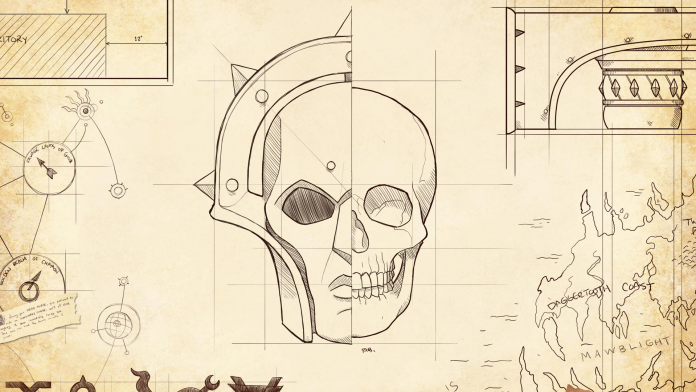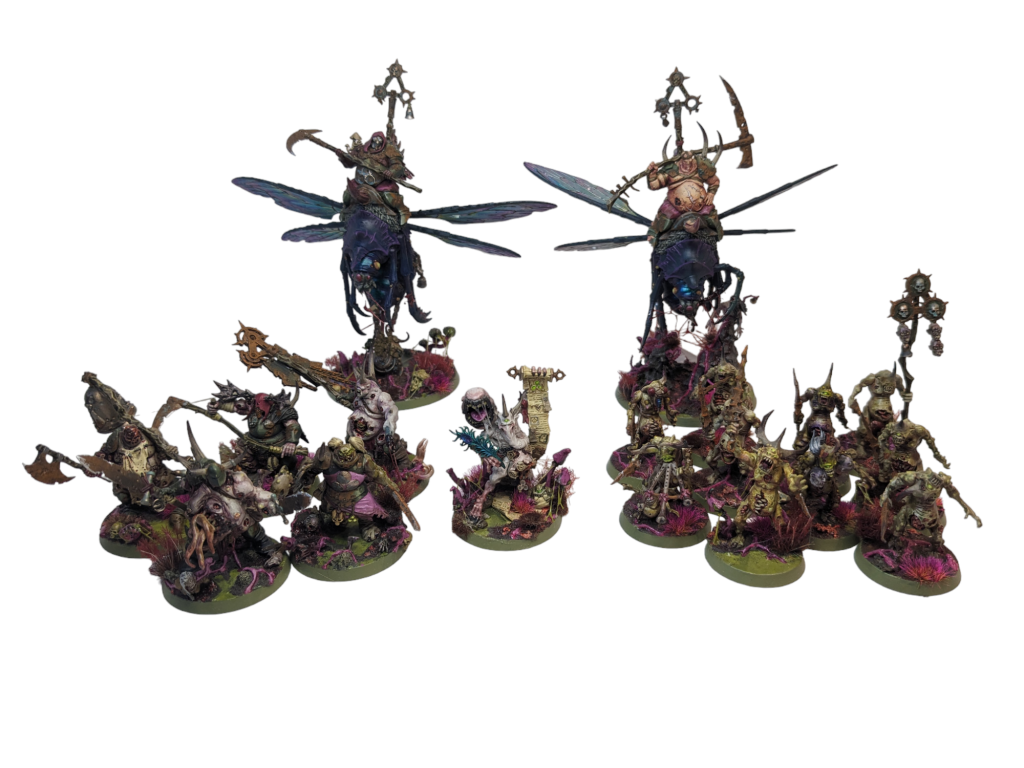
About 18 months ago I returned to Warhammer after a twenty year break, and this box set was the first thing I bought. I’ve bought and built it three times now, and each time was an absolute pleasure. I almost find myself wanting to get another one, despite not needing it for the table top, just so I can make it all over again. Everything involved with the building and painting of this Spearhead box is a total joy.
The box comes with a Spoilpox Scrivener, two Pusgoyle Blightlords, five Putrid Blightkings and ten Plaguebearers, so it gives you a good sample of both mortals and daemons to muck about with. Furthermore, they’re all great kits that allow you to go crazy with customization and kit-bashing. Normally when I’m building models, I just want to slap the glue on as quickly as I can so that I can move on to the painting, but the models in this box are so much fun to build that that I found myself enjoying the gluing almost at as much as the painting.
Plaguebearers
With their guts spilling out from their little pot-bellies, and their faces showing nothing but pure delight and pleasure at their own disemboweling, Plaguebearer models are some of the most characterful sculpts out there.


These are little pieces of Nurgle himself; daemons formed from the Plague Father’s essence. They form the disease god’s Tallybands; grunt foot soldiers tasked with counting all the new diseases unleashed upon the realms. They are festering carriers of the nastiest maladies, rotting sacks of flesh and gunk on legs, and they love it. Just look at their little faces!
This one looks like its proudly watching its grandchild at a primary school production of COVID: The Musical.
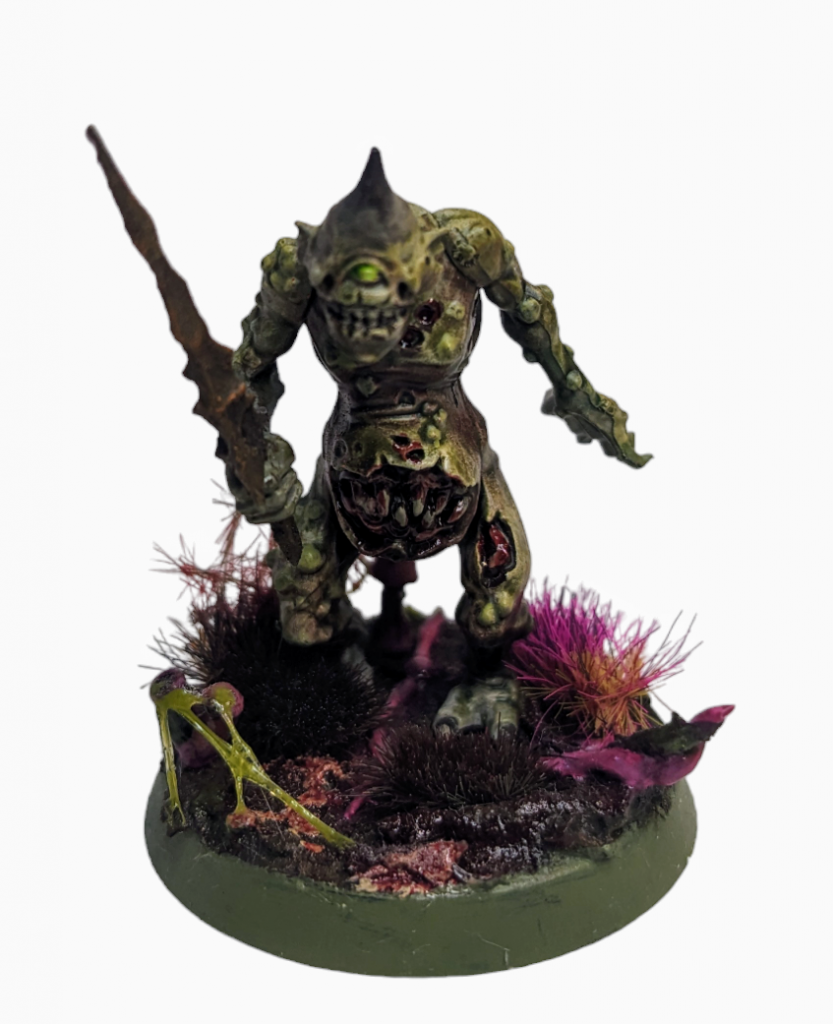
Whereas this guy has just pleasantly surprised himself with how great his own farts smell.
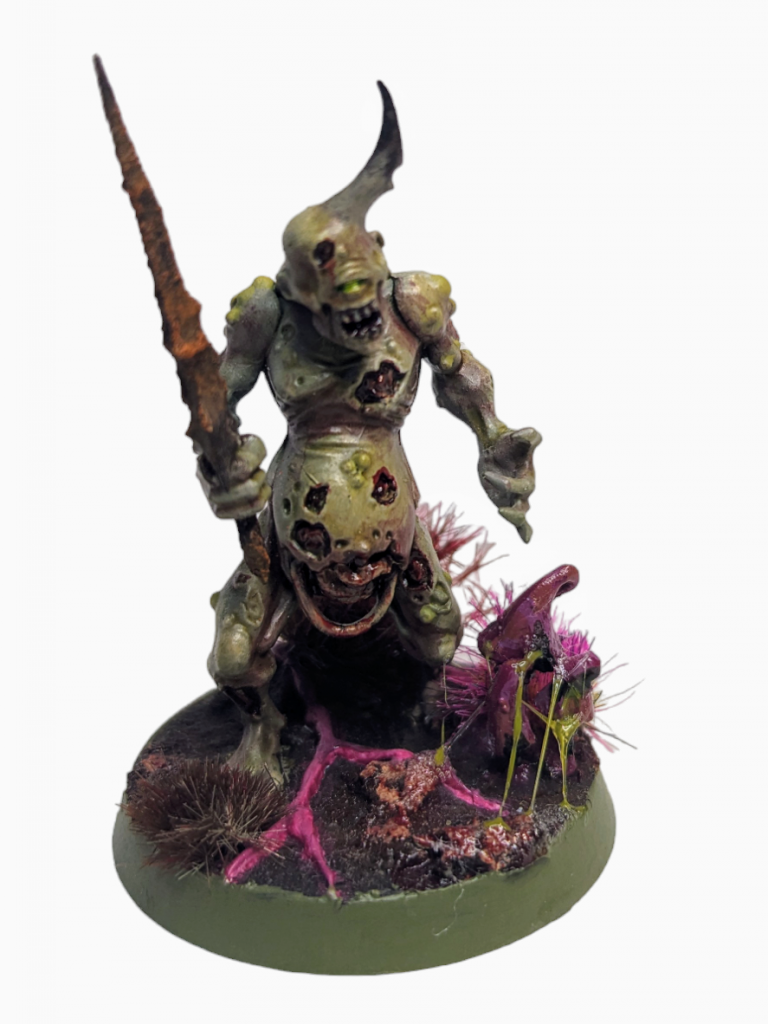
And this plaguebearer has just learned that his lower intestines are actually an erogenous zone.
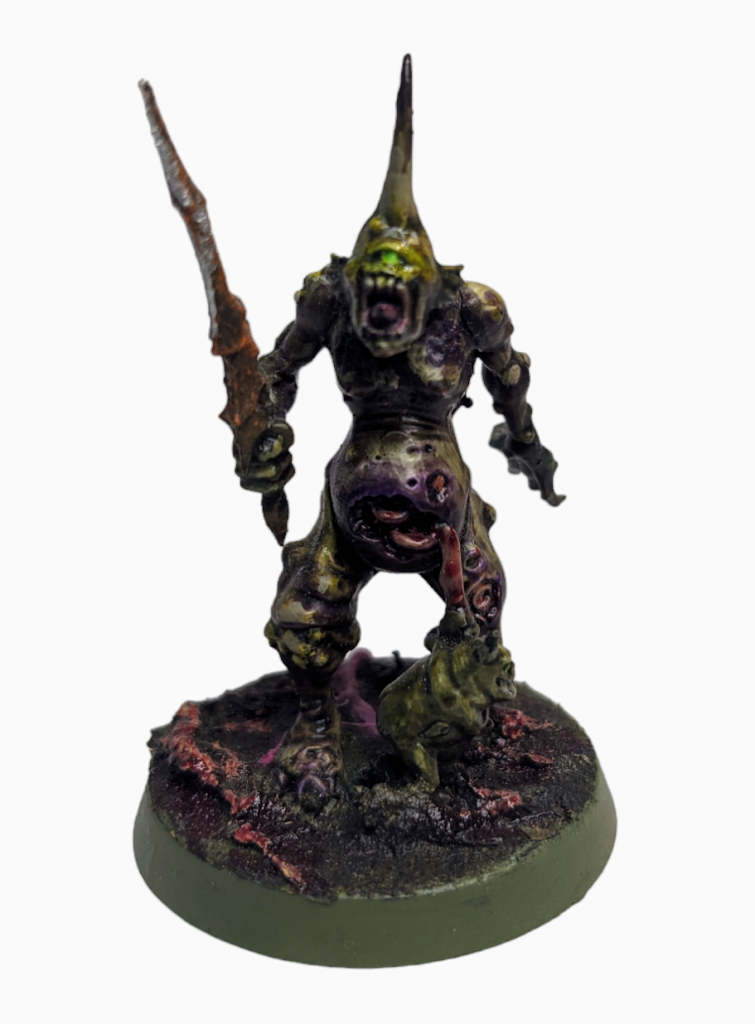 The kit itself is really easy to put together. Two pieces form the torso, couple of arms and a head. All these bits are interchangeable, and they fit nicely – so there should be no holding an arm in place, only to discover its off target and the shoulder blade is detached from the body.
The kit itself is really easy to put together. Two pieces form the torso, couple of arms and a head. All these bits are interchangeable, and they fit nicely – so there should be no holding an arm in place, only to discover its off target and the shoulder blade is detached from the body.
The command models are slightly more fiddly – but only slightly. Be sure that the musician’s flute is lined up nicely to its mouth and that the champion’s hand, holding a bouquet of heads, is snug. The champion and the musician are also the least customizable models in the kit, so you may want to think of another way of making them stand out.
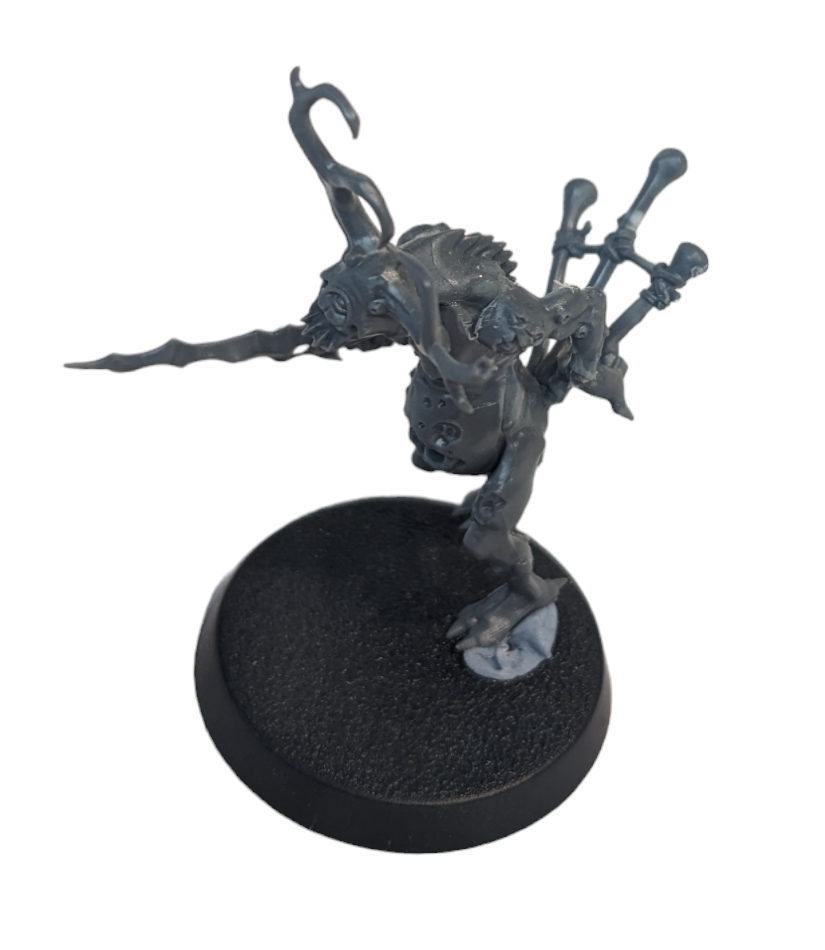
The kit also comes with a ton of Nurglings, decapitated heads and piles of maggots for you to customize with. You could, of course, stick all the Nurglings to the bases of your Plaguebearers as intended or, if you want to save a bit of money when you start expanding your army beyond the Spearhead set, you could save them up and create your own Nurgling Swarm with them.
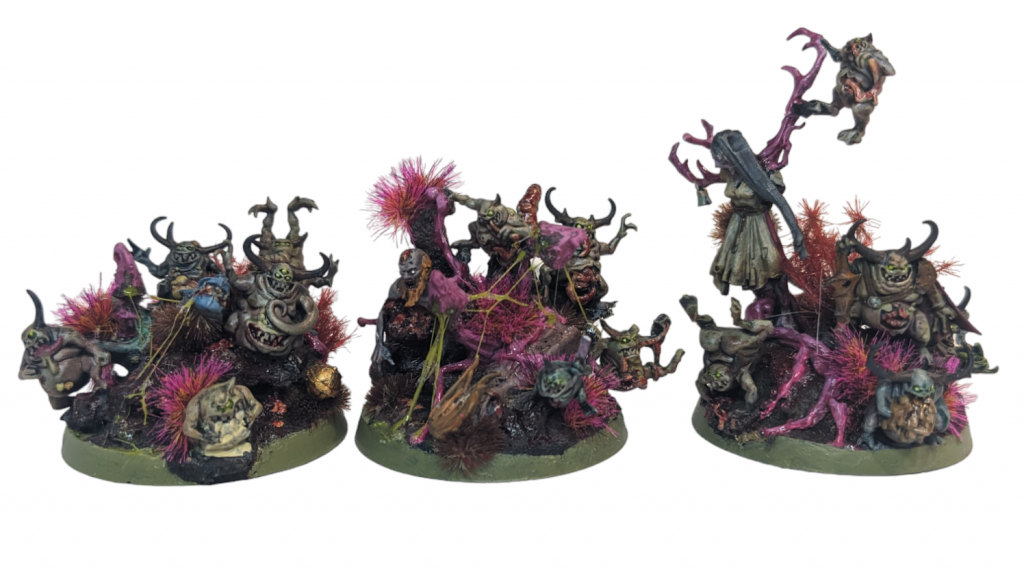
Plaguebearers are also really easy to paint. They’re naked for a start, so no armour or cloth. I just based with Rakarth Flesh, highlighted with Pallid Wytch, picked out a few bruised/ shaded areas with some Berserker Bloodshade and very diluted Luxion Purple and then went over everything with one of a number of green shades or contrasts. I used a few different greens to add a bit of variety.
Use some sort of rust effect, like Typhus Corrosion and Skrag Brown, on the swords, and pick out the pus-filled buboes and the horns and they’re set to go.
Spoilpox Scrivener
This is the only hero in the box (sort of) and it exists to buff the Plaguebearers. It’s such a great model, and contrasts nicely from the jolly nature of the Plaguebearers with its cantankerous attitude. It has that look of feeling drained following a persistent dripping cold that just won’t go away.
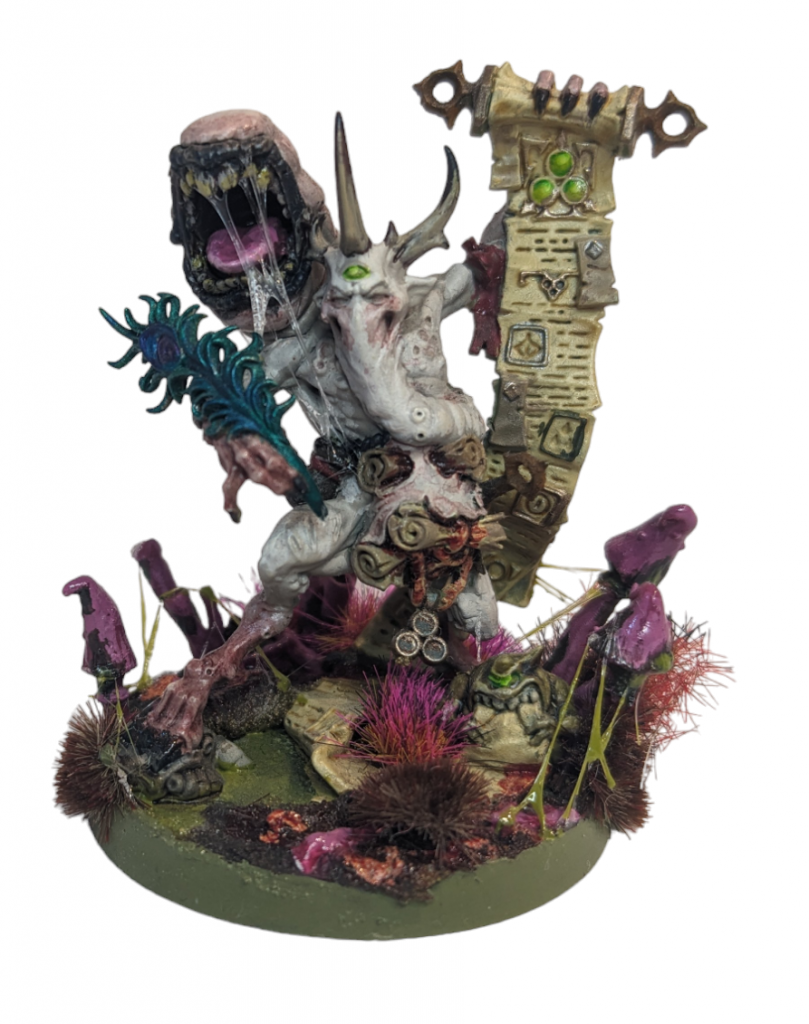
In terms of the story the model tells, it’s the scrivener’s job to keep the Plaguebearers in line and keep them counting and tallying new diseases, so have fun decorating that scroll. The quill is snatched from the tail of a Lord of Change, which adds a little narrative flair to the model, considering Nurgle and Tzeench hate one another more than anyone else, so go bright and colourful with that feather.
You could always paint it in much the same way as the Plaguebearers, but it’s such a unique model that you’re going to want to spend a bit more time on it. I wanted it to look pale and sickly with pink, puffy nose and eyes. Oh yeah, and a nice bit of Uhu phlegm and snot.
The model itself isn’t all that difficult to put together, but watch out for the scroll. You have to simultaneously connect the scroll at the bottom, and also with the arm. I somehow messed up both with my first attempt, so ended up a model with a floating arm, where the scroll didn’t match up at the bottom. I ended up having to compensate with green stuff, and covering up any other gaps with Nurgle’s Rot. Most of the model is pretty accessible without the need for sub-assemblies, but the scroll may be a little harder to get to once assembled, so that might be worth sticking on after you’ve painted.
Pusgoyle Blightlords
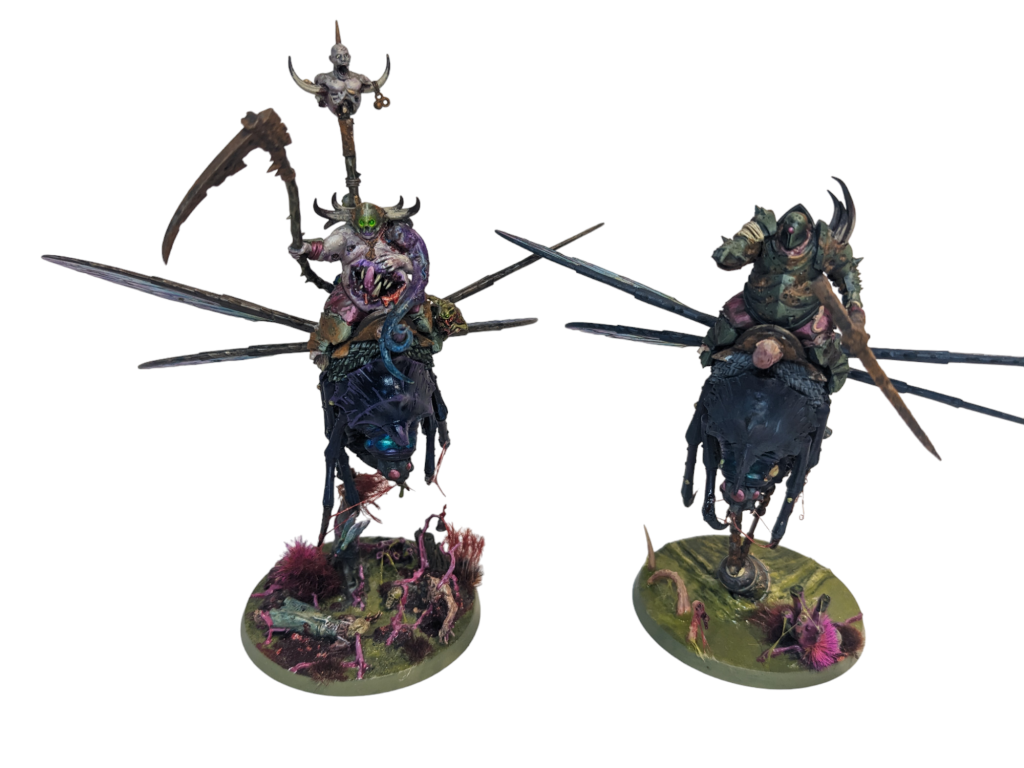
The box also comes with a Pusgoyle Blightlord kit, which makes two Blightlords. These fly-mounted, bloated lords of decay are the most elite of Nurgle’s Rotbringers – and the models certainly cut an imposing shape on the tabletop. Although, not so much when they’re having to fly sideways to keep in coherency because the model’s wings stick out too far for them to be able to fly side by side. Hopefully they’re going to get 2” coherency in 4th!
Whilst the spearhead rules require two Blightlords, the kit does actually allow you to build one of the models as a Lord of Afflictions, a fly-mounted hero. If this is your first set of Blightlords, and you intend to expand your spearhead force into a larger Maggotkin army somewhere down the line, then I would definitely recommend building the Lord of Afflictions. It’ll mean you’ll have one to hand if you want one for matched play games (they’ve been pretty useful in AOS 3rd) and you can always just use it as a regular Blightlord for spearhead purposes.
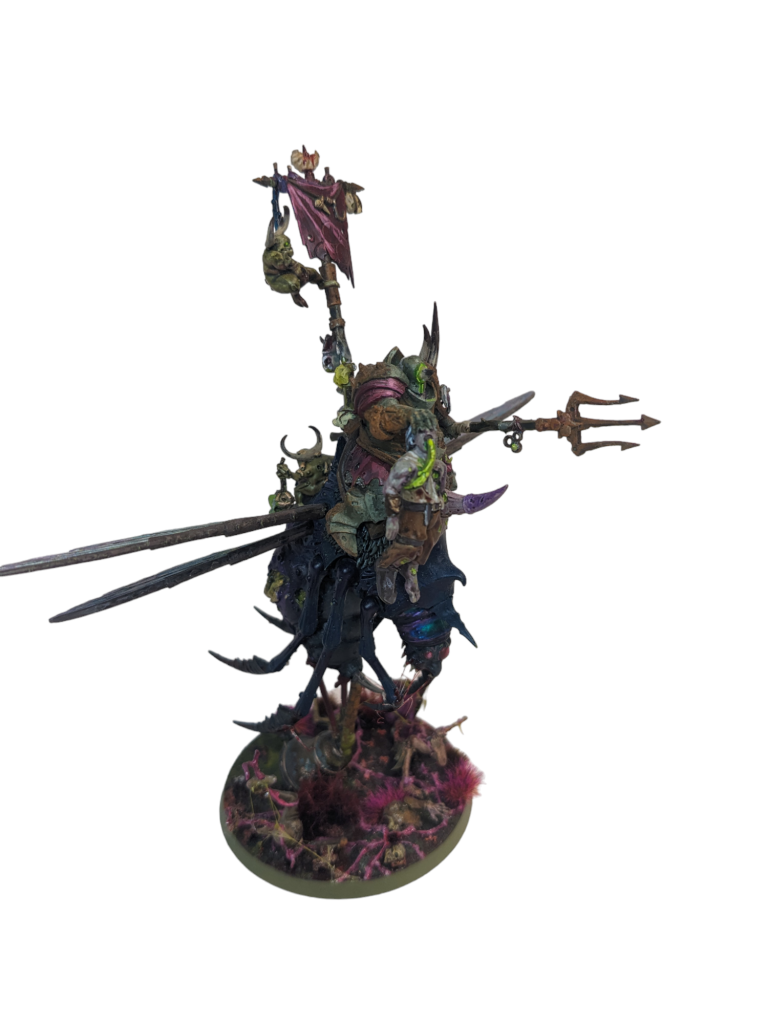
The Blightlord models are even more customizable than the Plaguebearers. There are loads of heads, arms, weapons, torsos and tentacles to give your nasty little pus-jockeys, but, as with most Nurgle models, you also have opportunity to go crazy with the green stuff or, if you have any spare pieces of rotting flesh or insect innards lying about, just shove that on. You can build this set multiple times and still have no two models looking the same.
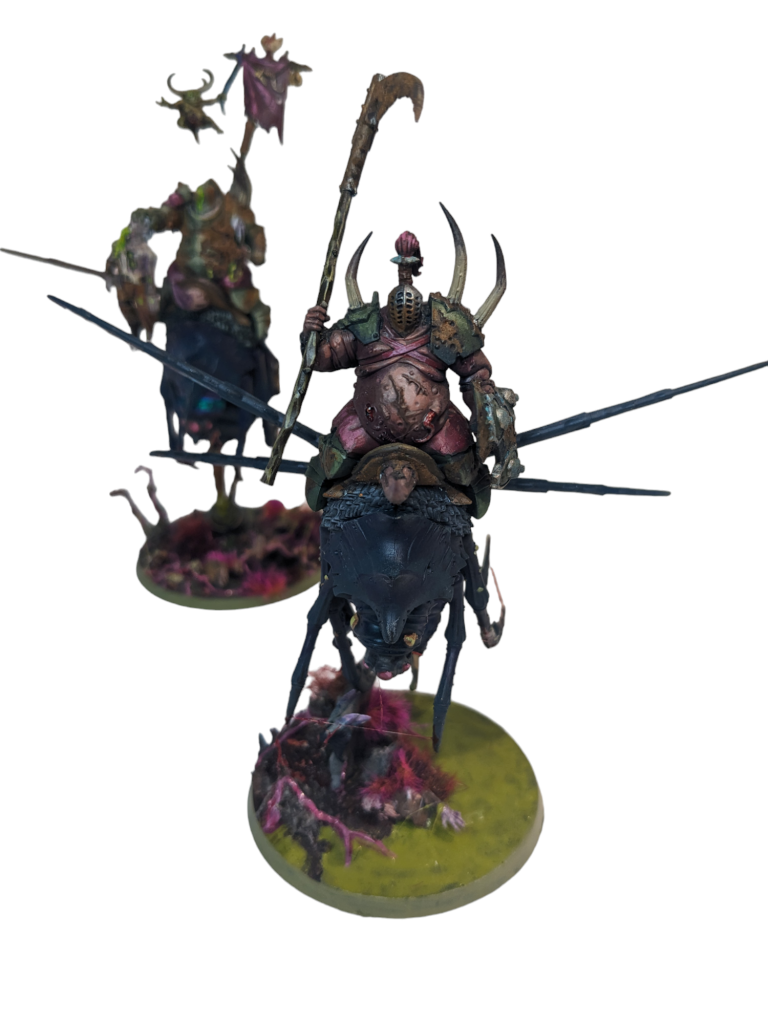
The sculpts are just brilliant. The flies have a strange sense of buoyant dead-weight to them, as if their wings are working overtime to keep their bulbous bodies in the air. The models are made without transparent flight stems, which always looks nicer. One of the models has its legs brushing against a jagged rock and the other dragging a huge bell on the end of a chain along the ground.
This adds to the model’s amazing aesthetic, and you can have some great fun with the bases as a result. However, as amazing as the models look, you are almost certainly going to snap the guy with the bell. This has happened to two out of three of the ones I own. It’s no surprise looking at the thing, that huge blubbery mass being supported by three thin strands of chain, its gunna break.
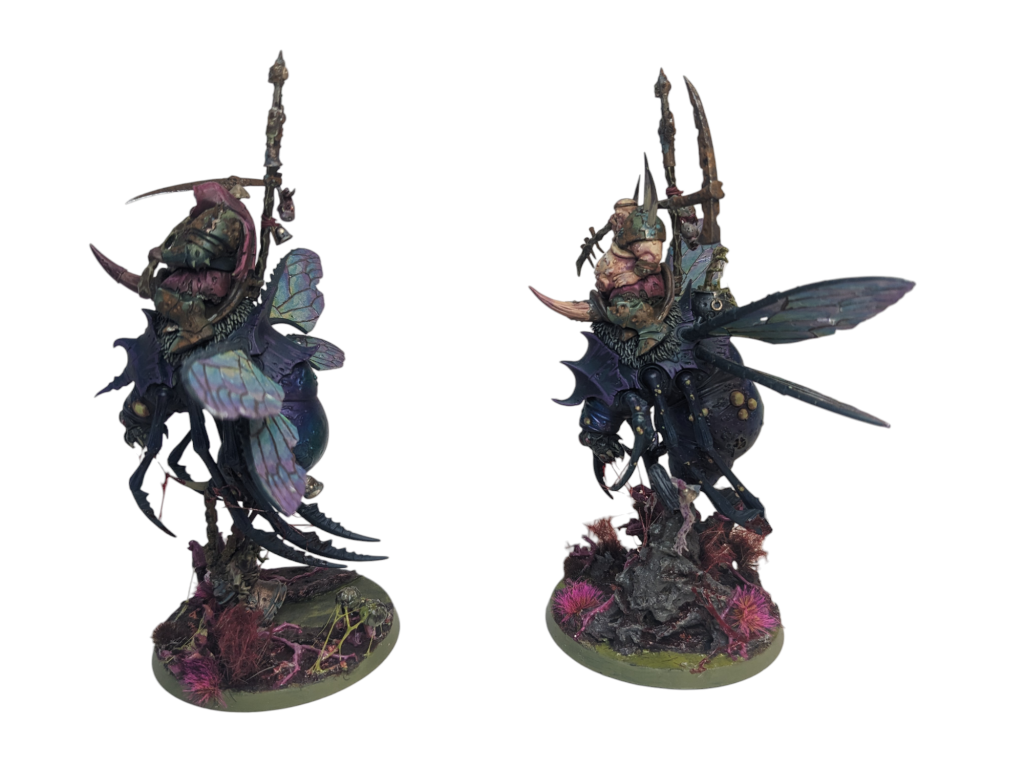
You may like to preempt this by pinning the thinnest part with a small metal rod (paperclip) or just wait until it snaps and then pin it. The other alternative is to reinforce the chain with a bit of creative kitbashing. I’ve already said how handy the spare nurglings are. I glued this little chap on to the bell, with his back against the chain, just for that little bit of extra support.
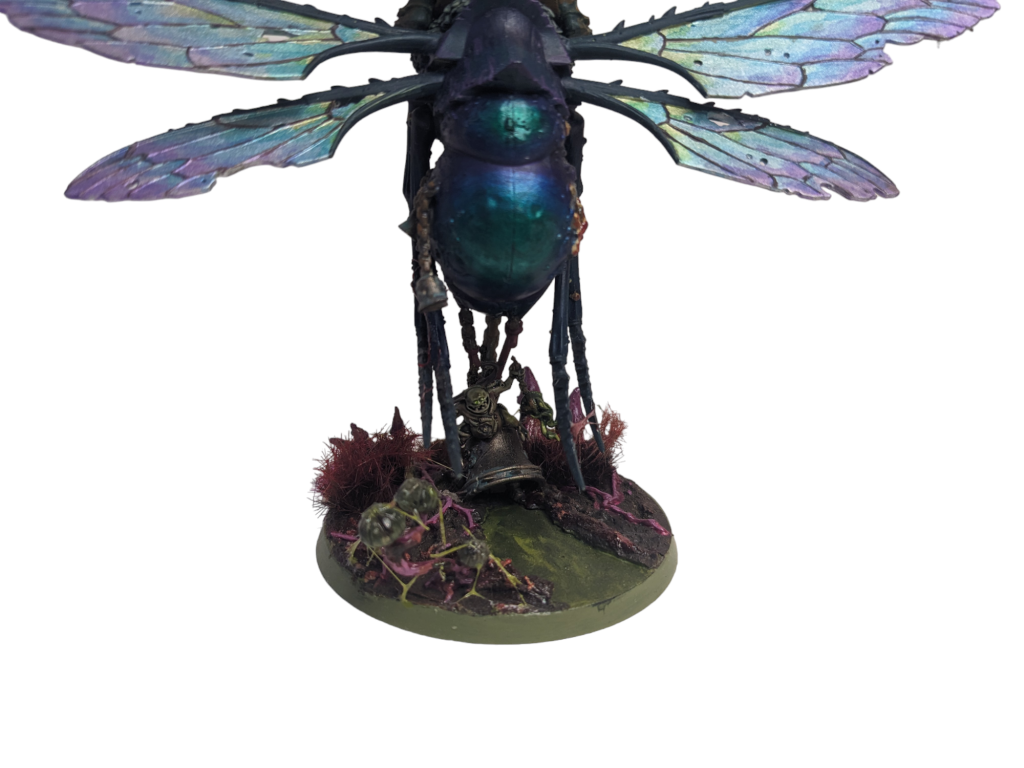
It’s also worth watching out for other sticky-outy bits on the modles. The banners on the back of the fly come off pretty easily, and my Lord of Affliction’s pike keeps on snapping. Granted, I am particularly clumsy, but it’s easy to do and I’ve had opponents reach over the board and snap something off. Storage and transportation is also a challenge, the flies are tall and delicate, and with lots of bits sticking out in different directions. I’ve gone with magnetizing the bottom with a ton of magnets and hoping for the best.
Finally, when painting, you probably want to do the flies’ wings and legs seperately, as you’re going to struggle to get into their belly and carapace otherwise.
Putrid Blightkings
Finally, You also get a set of five Putrid Blightkings in your spearhead box – you lucky, lucky people. Blightkings are, hands down, my favourite GW kit. Nothing else comes close. These are Nurgle’s greatest mortal champions, blessed with the most vile of diseases and excess amounts of flesh and blubber to make them extra tough. They’re also granted supernatural strength, enabling them to carry obscenely large weapons.
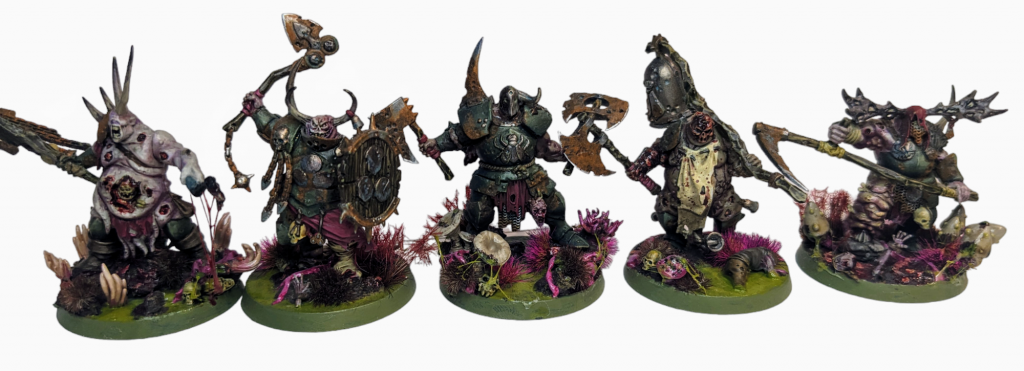
The details on these things are crazy; the rolls of fat, the buboes and festering skin, the horns and antlers, the rust-pocked weapons. The stances and the way they carry themselves is so flavourful. Their story is also told in the model itself. Some of them carry swords or axes, but others have farming utensils instead. Nurgle’s main weapons are the diseases he spreads. All he requires of his champions is that they be willing vectors of infection, so whether they started off as warriors or farmers, Nurgle has a place for them all in his family.
The kit takes customization to yet another level with tons of scope for kitbashing and freedom in assembly. And once you’ve built your blightkings, you’re going to have tons of spare bits and pieces left over to corrupt pretty much any other model you want to.

The Blight Girls. Smell C, Emma Munton, Fectoria Sputum, Gerry Hallunwell and Smell B
It’s also a kit that is really easy to fit together. I can’t remember there being many awkward bits to glue, and all the connections are pretty snug. There also aren’t many bits that are going to snap off easily, as there are with the Blightlords. But, the good thing about Nurgle is, even if something does break off, slap a bit of Nurgle’s Rot or Blood for the Blood God on it and call it a blessing from the grandfather.
That goes for painting too. Nurgle stuff is just a pure joy to paint. You can experiment with different colours and skin tones knowing that, if it looks a little off, then that’s just down to some nasty disease, and if it just looks too bad, slap some slime over it and no one will know the difference. You also haven’t got to worry too much about uniformity as you would with a faction like Lumineth or Stormcast. This means if you experiment with mixing paints to get that especially septic, gangrenous flesh colour, you don’t have to worry about getting the exact same colour a second time! This relieves the boredom of painting up a few dozen identical looking soldiers, there’s always plenty of interesting details to keep you focused.
In short, it’s just a great box. Fun to build, fun to paint and looks great – if festering guts is your kind of thing.
Have any questions or feedback? Drop us a note in the comments below or email us at contact@goonhammer.com. Want articles like this linked in your inbox every Monday morning? Sign up for our newsletter. And don’t forget that you can support us on Patreon for backer rewards like early video content, Administratum access, an ad-free experience on our website and more.
